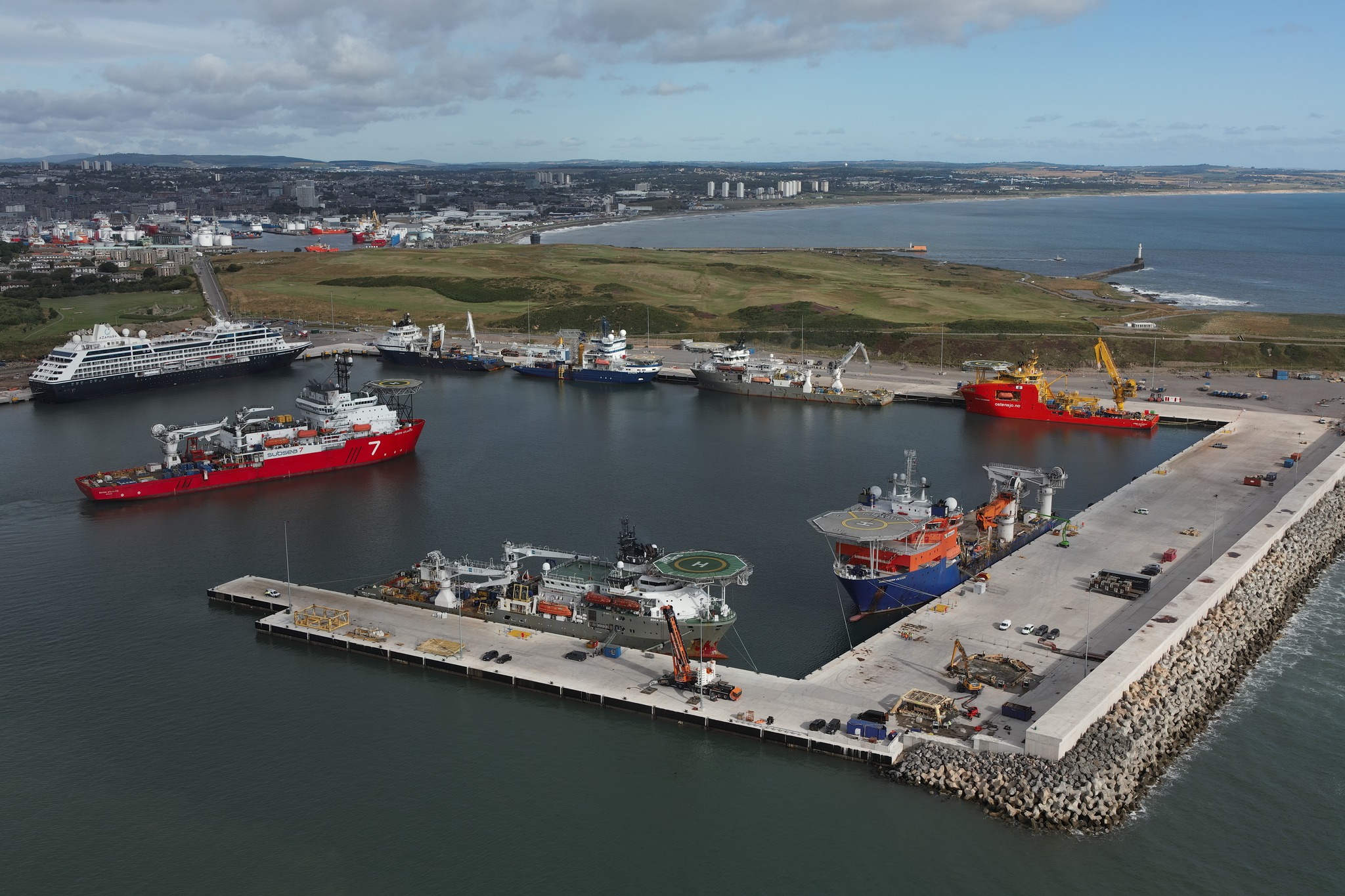Garry Murphy: Delivering essential infrastructure is about charting the right course

Image: Port of Aberdeen
Following September’s grand opening of the South Harbour at the Port of Aberdeen, Turner & Townsend’s UK head of project management Garry Murphy highlights the firm’s role in the programme, particularly the importance of project controls.
In September, the grand opening of the South Harbour at the Port of Aberdeen marked a special moment for Scottish and British infrastructure. One of the largest marine development projects in the history of UK ports, this expansion is ensuring that the UK’s oldest maritime hub remains a forerunner in supporting growth in the region.
The project has been a significant undertaking, with a staggering 3.5 million hours worked to deliver the £420m investment. However, the results are worth the endeavour – reimagining the almost 900-year-old port for a new future. The project has added a further 1.5km of deepwater berths and expanded capacity to accommodate modern ships almost twice the length of what was previously possible. This will have a phenomenal impact when it comes to increasing the number of vessels that can dock at Aberdeen, allowing access for cruise liners that bring tourism, and enabling the city’s economic transition to support renewable energy projects in the North Sea.
Turner & Townsend has proudly supported the project since 2020 with scheduling and project management support. However, the most significant achievements – and where the wider infrastructure sector can learn lessons – has been through the integration of project controls and digital tools.
Establishing our methods for success
While the project was conceived to ensure Aberdeen looked outwardly to its role in global trade and commerce, we encountered external headwinds early on. When we joined the project, it was already facing some obstacles, with supply chains disrupted by the pandemic and a global economy suffering the consequences of price inflation. The onset of the war in Ukraine and further dislocation in global trade routes compounded these challenges.
The antidote to these problems has been to establish a strong culture of collective responsibility – so that obstacles could be tackled together, with the common goal in mind to deliver on the vision for the Port.
At a day-to-day level, this has relied on shaping a positive commitment to transparency, accountability and a focus on embedding project controls. We created an in-depth programme and schedule of work, which could forensically monitor over 3,000 activities. Using Oracle Primavera, we were able to assign activities to owners, resource load to improve forecasts and enhance interface management. Software such as PowerBI then gave us the ability to visually chart and monitor progress, risks and dependencies, and make decisions quickly to adapt to changing circumstances.
Importantly, this visibility didn’t simply keep us fixated on rigid milestones but gave the team the confidence to adapt to changing circumstances. By using digital tools, we were able to focus on delivering project milestones, as well as the overall completion, while adjusting the programme to allow for any challenges.
These innovative tools were crucial parts of our product suite as we assessed and managed our progress against key milestones and made informed decisions based on up-to-date project data. It simplified and automated information which could be presented in the best possible format and suit numerous audiences – whether for supply chain and client workshops, funders or the board. It was crucial that the processes implemented supported the wider supply chain and ensured we could deliver the project as a team.
Reinvigorating infrastructure delivery
Through adopting these modern approaches, we’ve learnt important lessons for wider infrastructure programmes too.
While the specific difficulties presented by Covid-19 are hopefully behind us, the construction sector continues to navigate challenging conditions when it comes to labour availability, material supply and the demands of a net-zero transition. Digital investment in programme controls will stand the industry in good stead as we look to deliver new infrastructure programmes – whether that is further port investment being seen in other maritime hotspots in Scotland, the rest of the UK or looking further afield to opportunities to export expertise abroad.























